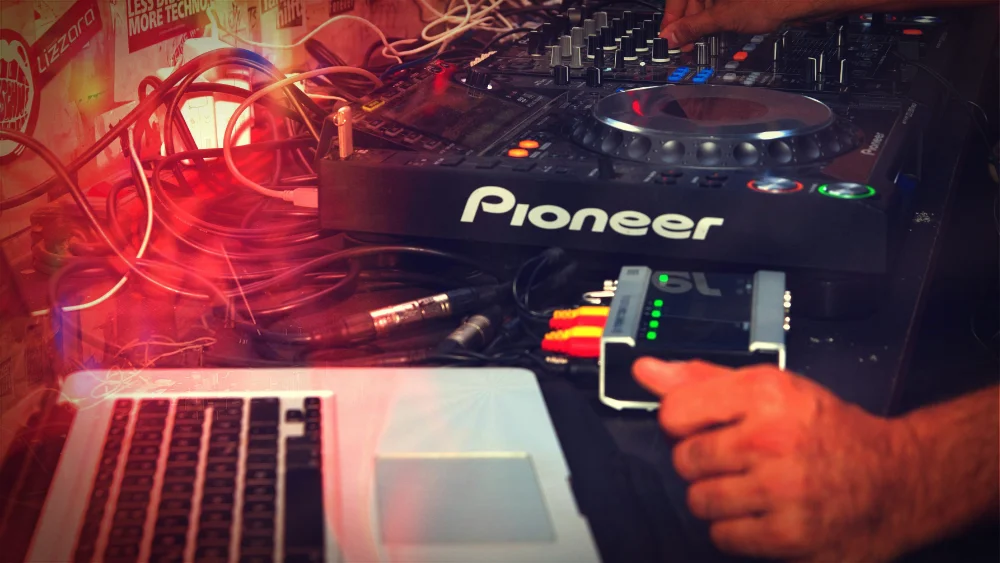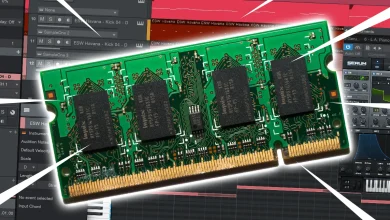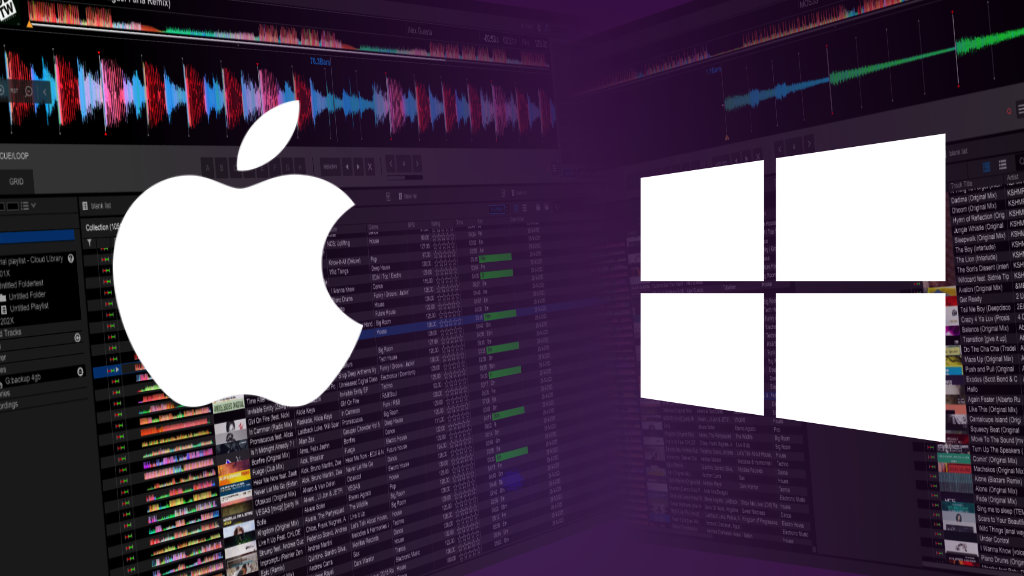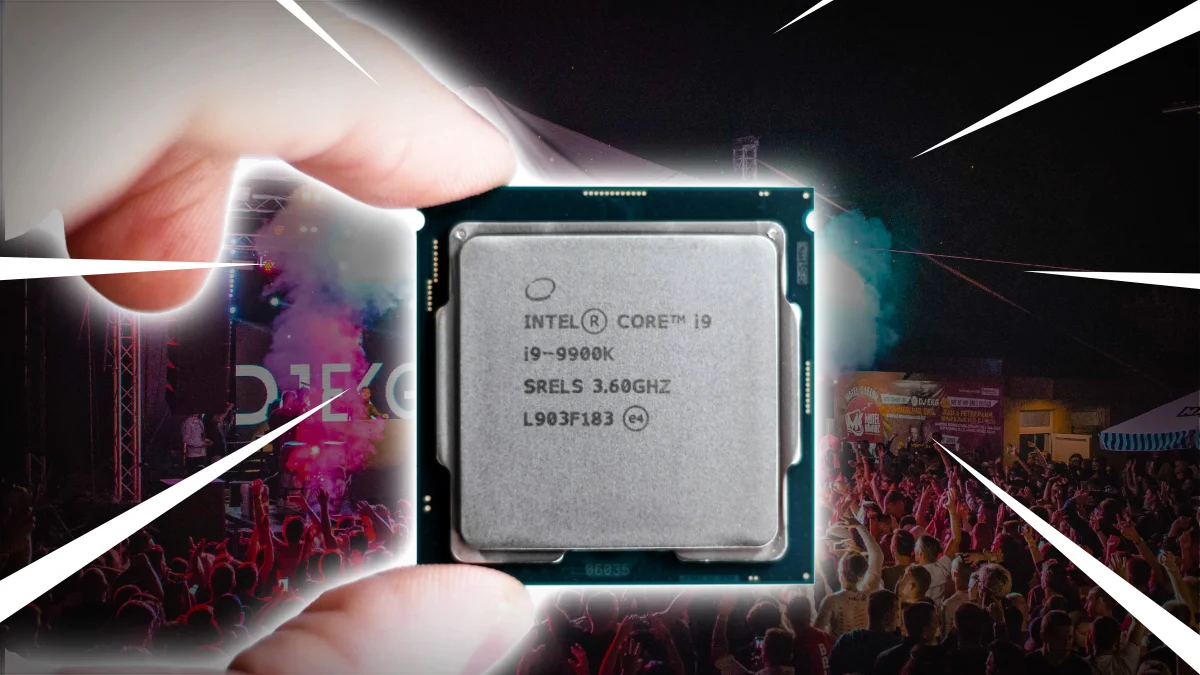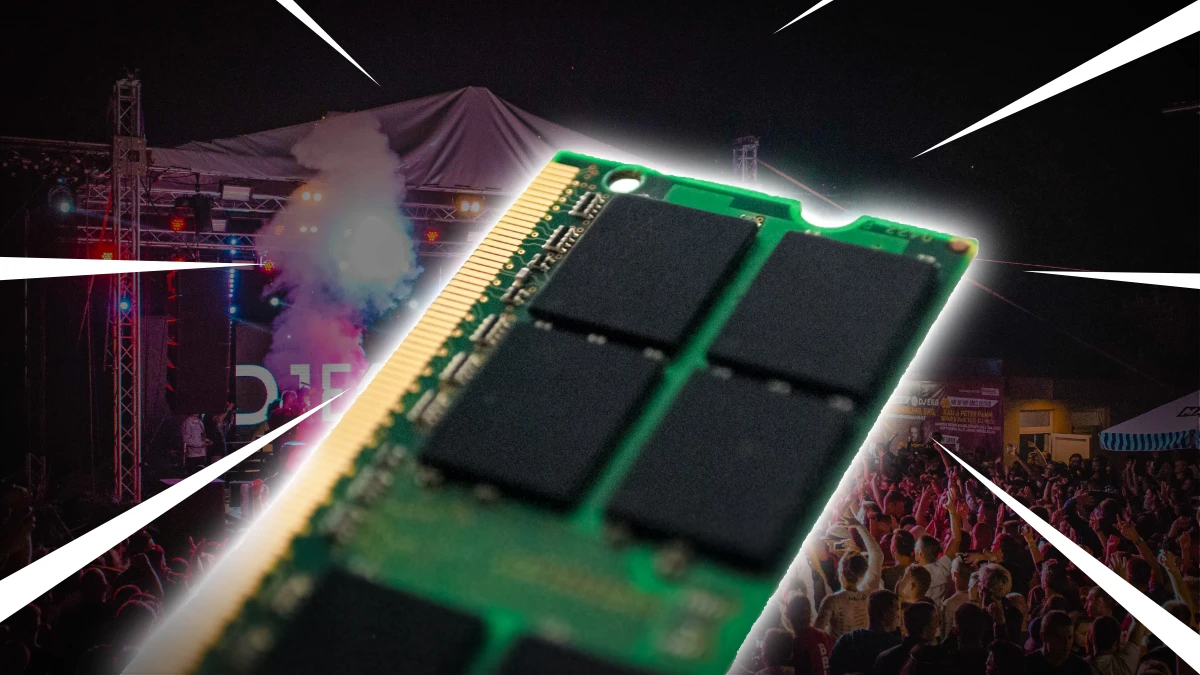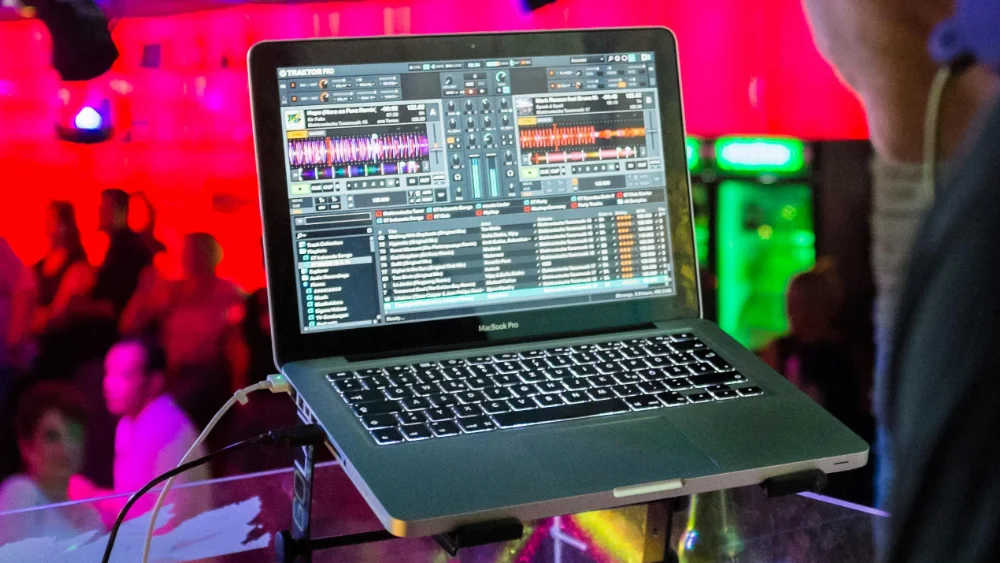Buying guide: Computer for DJing – by a DJ & computer specialist
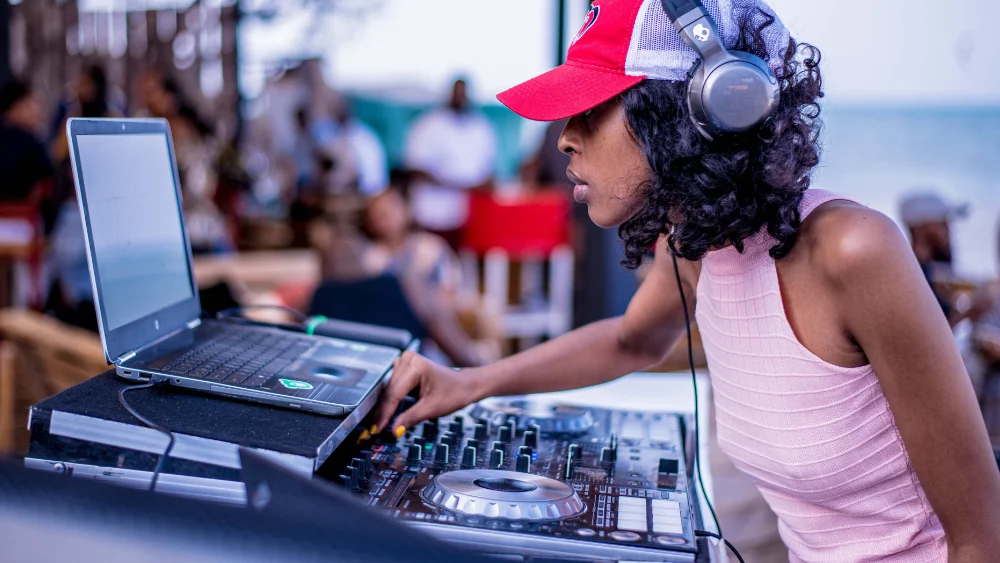
Table of Contents
- Difference DJ and music production
- Mac vs PC
- Chromebook
- Windows
- CPU
- Ram
- Storage
- Graphics card
- Cooling
- Display and resolution
- Battery life
- Stand
- Case
- Keyboard
- Sound
- Connectivity
- Power connector
- Bloatware
- Brands
- Video
- Models
For the last 20-some years I regularly fill in at a local computer store to help out when they have staff shortages.
So sell laptops and repair laptops regularly, on top of that I’m also a DJ for the biggest part of my life.
From this combined experience I wrote this article on how to choose your DJ laptop.
Difference DJ and music production
Computers for DJing and music production are vastly different computers.
Music-production-software and live-performance-software are basically the same thing.
This is software like: Studio One, Ableton Live, FL Studio, Logic.
Music-production-software requires a lot of system resources.
DJ software is software like: Rekordbox, Serato, Virtual DJ.
DJ software requires less system resources.
In my article about the difference between DJing and music production I’ll explain the differences in detail.
How much system resources each DJ software uses, you can find in my article about the best DJ software.
Mac vs PC
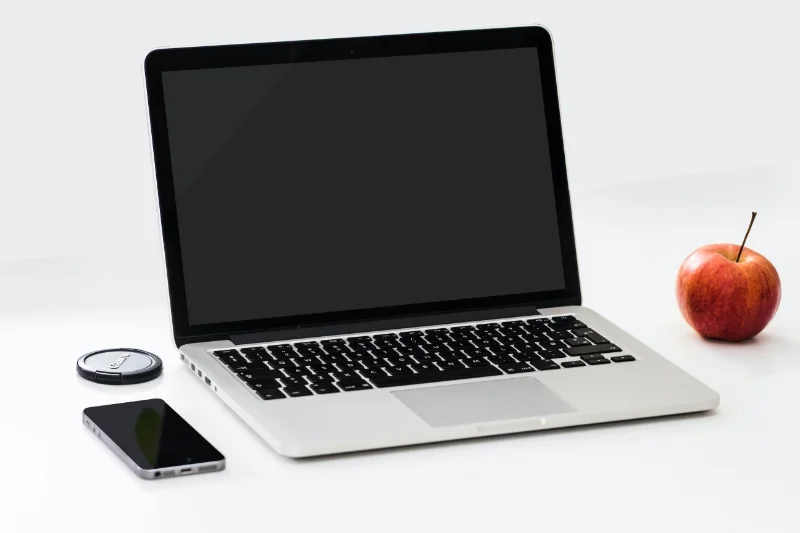
A lot of DJs use Macs for their gigs.
What I like about Apple is that things are easy to operate.
If things work at all …
Because that is often a big issue with Apple.
They don’t care about quality as much as they like you to believe.
Apple prefers melting motherboards over slowing down the processor or kicking in the CPU fan to cool down the CPU.
I’ve had my fair share of frustration with Apple service, their standard answer is always: buy a new one.
I’ve had a iPhone DOA, which they refused to fix, and I had a Mac DOA, which they also refused to fix.
On top of that, I had another dead iphone within warranty, which they refused to fix.
I’m a very happy Windows and Android user since then.
Generally PCs are a lot cheaper and easier to repair.
You need to spec Apple’s out to the max, because you can’t upgrade later.
You will pay the famous Apple tax on that.
Both Mac and PCs offer a full feature-set for DJs.
So, it is up to your personal preference what you like.
In my article on Mac VS PC for DJing I dive deeper into all the up and and downsides of using Apple and Windows computers.
Including my own experiences with my iPhones, iPads, Macbooks and Macs.
Chromebook
A Chromebook is an absolute NO-GO for DJing.
Most Chromebooks hugely underpowered.
But even more important than that: almost no DJ apps supports the Chromebook OS!
Windows
You can choose a Windows Home or Pro version.
For DJs, the Home version is enough.
The Pro version has support for domains and remote desktop (which you probably don’t need).
I’ve been using the Home version for years for DJing without any problems or need to upgrade.
There is also a S-version (stands for Secure) that only allows apps from Microsofts App Store.
You can disable this, which you should in order to be able to install your DJ app.
Free DJ tips in your inbox?
As a bonus gift I will send you a FREE E-book on how to kick-off your DJ career!
CPU
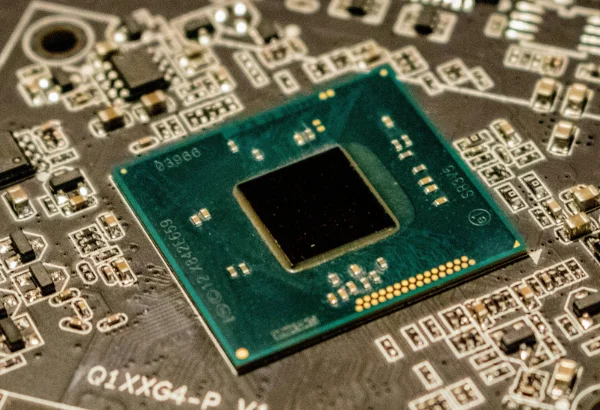
The processor (or CPU – Central Processing Unit) is the calculating component of your computer.
Your computer is in basic one giant calculator and the CPU is at the heart of it.
Together with RAM (memory) and storage, the processor is a key component to determine how fast your computer is.
Each year new processors are released.
Each year processors getting faster.
Core count is used in a lot of marketing material to show how fast a CPU is.
While that is true, 4 cores is more than enough for DJing.
DJ software doesn’t take advantage of more cores.
Recommended processors:
- Intel Core 5, 5th gen or better
- Ryzen 5 3000 or better
- Apple M1 or better
When you want to DJ with video or generate visuals, you will need more than this.
Like a AMD Ryzen 7 and Intel Core 7, but the M1 will do fine.
Qualcomm released the Snapdragon X elite processor, but almost no software (only DJay Pro) has native support for that processor.
Some software like Serato, Rekordbox, DJay Pro, Beatport DJ and DJuced “eat” more CPU than any other software.
Read more about processors for DJing, it includes performance tests for the different DJ software.
Ram
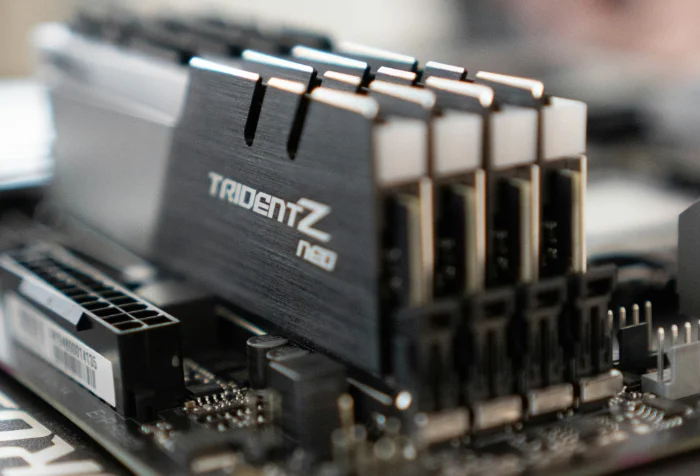
The RAM (Random Access Memory) determines how much information it can load from storage in it’s memory in one chunk for the processor to work on.
So the more information (=more memory) it can load at once, the faster the computer generally is.
8GB of RAM is often enough for DJing.
But I would recommend at least 16GB:
First of all, Serato and Rekordbox need it.
Second, you also need it when you want to use video, visuals or stem separation.
Third has to do with the lack of video memory, which I will touch upon later.
Make sure to choose a computer where you can actually expand the memory later.
All Mac laptops have integrated memory which isn’t expandable.
If that is the case: choose twice the amount of memory you think you will need.
Read more about memory for DJing, it includes performance tests for the different DJ software.
Storage
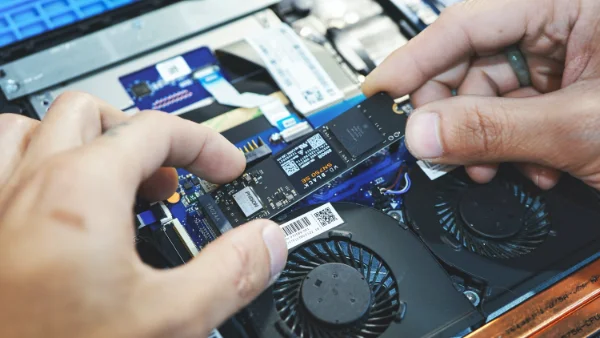
The amount of storage determines how much you can save on your computer.
For DJs, this means: your DJ software and your music.
How much do you need?
High quality .MP3 files take up roughly 2MB per minute.
.WAV and .AIFF files about 10MB per minute.
Let’s say you have 2500 .WAV files, you need 2500 x 10 = 25000 MB (=roughly 25 GB).
Let’s say your DJ software takes up 15GB.
Let’s say 30GB for Windows or MacOS.
And you need 20% free capacity on an SSD to function properly.
As you can see, 128 GB storage capacity is very meager.
I would advice 500GB if you want to do other things with your computer as well.
Graphics card
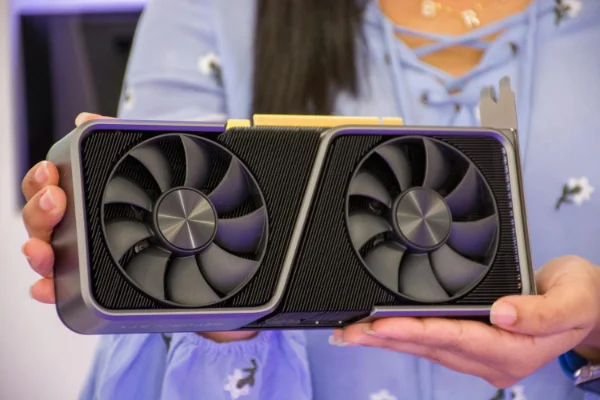
The graphics card is responsible for the image on your monitor, often referred to as GPU.
(Technically the GPU is the CPU on a graphics card).
A graphics card can take some load of your CPU to display graphics on your monitor.
But it depends on your DJ software if (and how much) it takes advantage of the capabilities of a graphics card.
When you use visuals (which are 3D rendered) or video (video codecs are also often handled by the graphics card), you need to have a proper graphics card.
It it still not super intensive like video editing or gaming, but it can take some toll on the graphics card.
Other than visuals and video, the graphics card doesn’t have to be that advanced, generally speaking: DJ software isn’t graphically intensive.
Integrated graphics cards (which is the case for a lot of laptops) don’t have dedicated memory.
They share memory with your internal memory.
Take this into account when choosing memory, especially when you can’t expand later.
An Intel, Nvidia or AMD graphics card with 4GB of memory is generally enough.
But some features, like stem separation need 6GB of memory.
Cooling
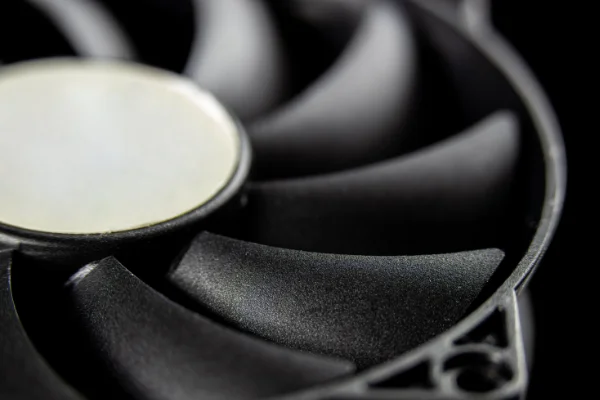
I hear nobody talking about this, I don’t understand why.
Processors and other computer components can become very hot.
DJ laptops are used in warm environments like clubs.
To protect the hardware from overheating, manufacturers slow down the laptop which can result in crackling audio.
Or they shut down the computer automatically to prevent overheating, a lot of Apple laptops suffer from this.
After the emergency shutdown due to overheating, you need to let your computer cool down a couple of minutes before you are able to use it again.
You don’t want this to happen during your DJ gig!
Passive cooling is not enough to keep the processor cool!
Go for active cooling, instead of passive cooling.
Active cooling = spinning fans
Passive cooling = no spinning fans.
Especially Apple (MacBook Air, iPad) has the tendency to make passively cooled laptops.
Even actively cooled laptops often underperform, due bad thermal design and bad fan configuration (kick in too late or at a too low speed).
Which results in warped and sometimes fried motherboards (see Google).
Actively cooled computers are always faster.
But the downside of active cooling is the added fan noise (which you won’t hear in a club).
The rule of thumb for thermals is:
The smaller the laptop, the worse the heat dissipation is.
The smaller the laptop, the more likely it is to have passive cooling.
Free DJ tips in your inbox?
As a bonus gift I will send you a FREE E-book on how to kick-off your DJ career!
Display and resolution
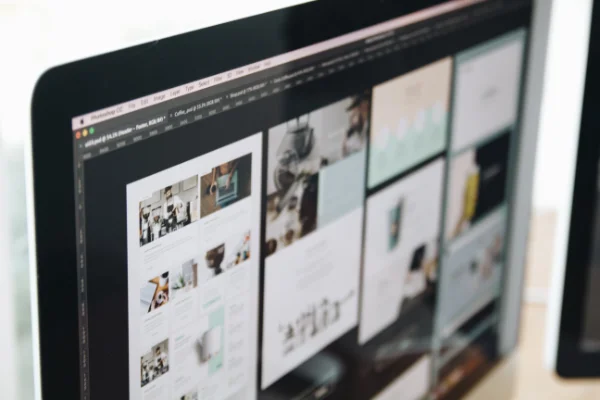
High resolution displays, like the Apple retina displays are nice have, but are not a necessity.
Some software doesn’t even take advantage of this.
But Rekordbox, Serato, Virtual DJ and Traktor do.
I would advice a 15″ screen, but larger is preferred.
The bigger the screen size, the more you can read comfortably.
Although most software can increase font size, it always it at the expense of usability.
I would advice a monitor with a resolution of at least 1280×720.
Below this resolution, you will run into problems that buttons “fall off” the display, which is very annoying.
I would recommend a bright display, not for the gigs in the dark, but for the gigs in bright sunlight.
Nothing is more annoying than not being able to read your screen.
Battery life
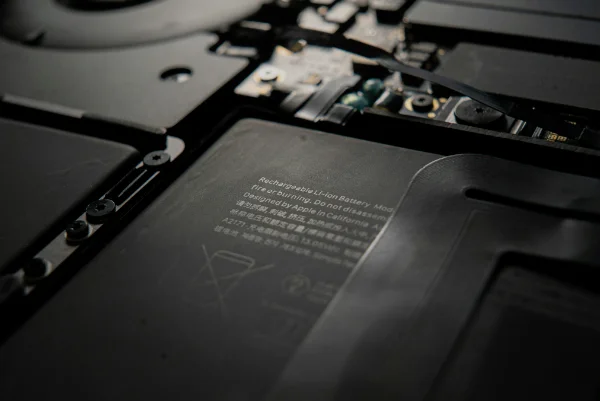
A lot of DJs use their laptop battery to perform a gig.
I would highly advice against this for 2 reasons:
First,
Laptops running on battery run in battery-saving-mode, not performance-mode.
This can lead to audio stutters.
Second,
You can run out of juice during your gig.
This interrupts your flow, and you are distracted.
You have to search for a power outlet and the AC adapter in the heat of the moment.
Some software like Rekordbox have a battery indicator, which is very convenient.
The marketed battery life (10 hours, 20 hours) is always measured in the most optimal situations.
These situations are typing in a Word document, not operating DJ software.
DJ software drains the battery quicker than Word.
The 20 hour battery life is measured when the battery was new.
With every charge you destroy your battery a little bit.
It can hold less charge next time.
Especially Apple is always very “optimistic” with their battery life.
Translation: about 50-70% of the advertised battery could be a real world scenario.
Stand
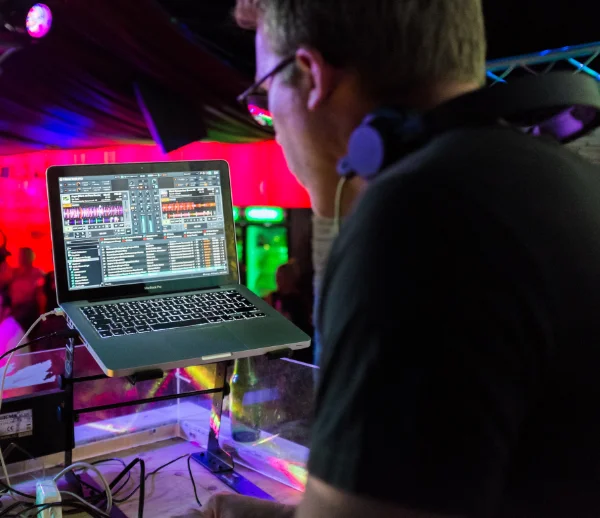
DJ booths can be cramped places with a lot of cables.
If you can raise your laptop a little bit, it is closer to your eyes and takes up less space in the booth.
On top of that: the more airflow that can reach your laptop, the easier it is to cool.
Meaning, you will have a more performant laptop.
A laptop stand is not a necessity, but a nice-to-have.
But you have to haul that stand with you every time you do a gig.
Case
Most laptops have a plastic shell, but there are some laptops that have metal (aluminium) housing.
Metal is stronger than plastic.
It can take a hit if need be.
This is best when playing DJ gigs.
Your laptop is your work horse.
Constantly packing up and loading in your laptop will result in some damage some time.
Some Apple laptops have metal housing and some Asus laptops.
Also the Dell XPS laptops have Aluminium housing, but XPS laptops are not good for music production because of lag.
Keyboard
Clubs and festivals can be very dark places.
It can be very hard to see what you are typing.
Having a backlit keyword makes all the difference in the world!
Not all keyboards are backlit, often only the more expensive laptops/keyboards.
Sound
For DJing you need 2 sound outputs from your machine:
- 1 for the master – what your crowd hears
- 1 for your headphones – what only you hear, to preview songs and beatmatch.
Most DJ controllers install themselves on your computer as a sound card with 2 outputs for this exact reason.
But if your DJ controller doesn’t have 2 outputs (some cheaper ones don’t), you need to lean on your laptop’s sound card.
Most laptops and desktop computers have integrated sound cards, but those have only 1 output.
When this is the case, you need an external sound card that has multiple outputs.
Compared to a few years ago, the quality of these laptop-integrated sound cards is good (not amazing, but often good enough).
But some integrated sound cards give weird audio artifacts when you move your mouse or something changes on screen, or something is loading from storage.
When this happens you also need an external audio interface (=sound card).
Some clubs have an XLR connection to plug into, which of often only available on DJ controllers or external sound cards.
When a club has a mini-jack connection, you can plug it into your laptop (or DJ controller) directly.
When a club has a mini-jack connection, you need plug it into an external sound card or DJ controller.
When you need a mini-jack connection or RCA, make sure that your laptop or your DJ controller has the proper connection.
Apple for example has the tendency to remove mini-jack connections their devices.
Connectivity
If you have USB connected hardware (like a DJ controller), make sure your laptop has the same connection.
A lot of DJ controllers have USB-A connections, while some laptops (read: Apple laptops) have only USB-C connections.
Modern DJ controllers can be connected via Bluetooth (also often standard), but this introduces latency.
This also means that your controller needs to have a battery inside or an external power source.
The battery can go empty, which is another downside to working with bluetooth.
If you want to use streaming services (like Tidal for example), you also need to have a working internet connection.
It is useful to have an ethernet connection to connect a RJ45 UTP cable to your laptop for internet.
I wouldn’t rely on WIFI too much, it can be very spotty in a place with a lot of cellphones (read: a club or festival).
Also an HDMI connection on a laptop is very useful when you incorporate video or visuals in your gig.
Power connector
For the last couple of years, laptops have gotten flimsy power connectors.
These connectors are very tiny and very fragile.
Power connectors are prone to break when you bump into them or trip over the wire.
The connector internally separates from the motherboard, and you can’t charge anymore.
Depending on the internal damage, they can be extremely hard to fix (if they can be fixed at all).
On top of that, there are often no reliable replacement power adapters available to replace the power connector.
The absolute #1 reason for laptops to break is the power connector!
If you can, try to avoid these flimsy power connectors.
Apple has a very good solution for this on Apple laptops: mag safe!
When the cord is yanked too hard, the magnets just disconnect, no harm done.
Bloatware
Cheap laptops nowadays are in a large part sponsored by software producers.
So cheap laptops come installed with a ton of bloatware you don’t need.
This bloatware slows the computer down, give crackles in the audio, opens the computer up to unnecessary potential security breaches, and potential privacy issues.
Especially brands like Acer and Lenovo are notorious for these “shady” practices.
This is why we always format and reinstall windows in the computer store, so clients don’t have to deal with bloatware.
Apple on the other hand comes bloatware-free.
It’s up to you to install the bloatware 😉
Brands
Recommended brands
- HP
- Asus
- Microsoft
- Dell
- Acer
Brands to avoid
All brands have bad and good models.
From experience (by working in a computer store) I can name some brand you have to be careful with:
- Lenovo – only the build quality of the Thinkpad is decent
- Dell XPS – because of known audio lag/stutter issues
- Apple – quality and support issues
Video
Models
In the next article I recommend specific laptop models:


